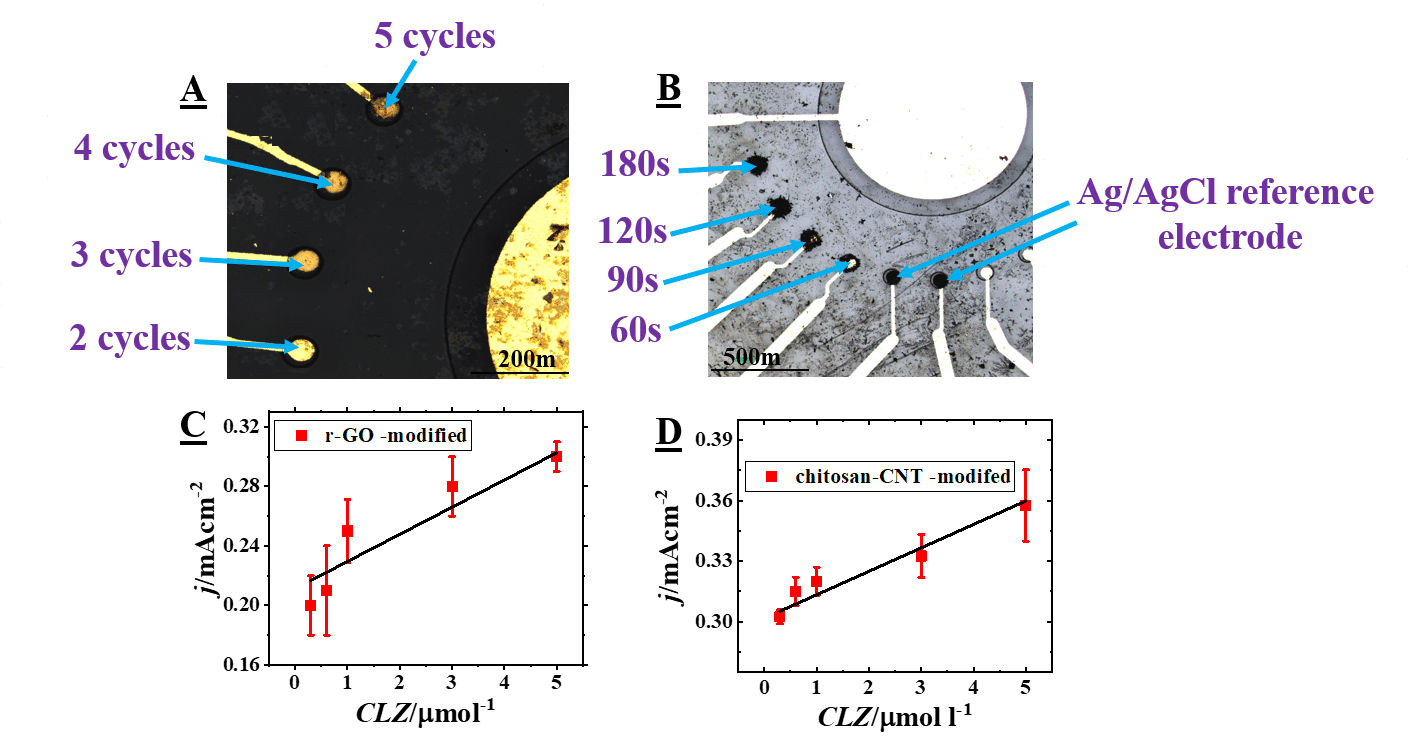
Reduced graphene oxide and chitosan-carbon nanotube -modified microelectrodes for real-time detection of antipsychotic clozapine
2Maryland Psychiatric Research Center, University of Maryland School of Medicine, Baltimore, Maryland, 21228, USA
Today, clozapine (CLZ) is considered the most effective antipsychotic medication for schizophrenia. However, CLZ is still one of the most underutilized medications due to burdensome treatment monitoring schemes and adverse side effects.[1] Here we present the development of a miniaturized electrochemical sensor that enables a minimally invasive, real-time and in situ monitoring of CLZ levels in finger-pricked whole blood samples. We modified microfabricated sensing microelectrodes with reduced graphene oxide (r-GO) and chitosan-carbon nanotube (chitosan-CNT) bio-composite films (Figs. 1A & 1B). [2] The modifications increased the electrocatalytic activity of the microelectrodes towards CLZ oxidation and improved the overall selectivity of the sensor. We observed CLZ dose-response characteristics for the r-GO and chitosan-CNT –modified microelectrodes that resulted in a limit-of-detection of 0.60±0.04 µM and 0.50±0.06 μM and a sensitivity of 0.0063±0.0003 mA/cm2µM and 0.0075±0.0004 mA/cm2µM, respectively, while the bare microelectrode was unable to differentiate between the different doses of CLZ (Figs. 1C & 1D). Importantly, the r-GO and chitosan-CNT –modified microelectrodes demonstrated a limit-of-detection value that is below the clinical threshold (1-3 µM). Our preliminary work will pave the way for the production of miniaturized and wearable testing devices, designed for schizophrenia treatment management.

Figure. 1. (A) Optical image of different microelectrodes modified with varying number of electrochemical cycles of electrodeposited r-GO (2, 3, 4 and 5 cycles), (B) Optical image of the microelectrodes modified with chitosan-CNT for different electrodeposition durations (60, 90, 120, and 180 seconds). CLZ dose-response characteristics using the r-GO (C) and chitosan-CNT (D) -modified microelectrodes.
References
- Buchanan RW, et al. Schizophr Bull. 2010; 36(1), 71-93.
- Shukla RP, et al. Adv Healthc Mater. 2019; 8, 1900462.
Powered by Eventact EMS